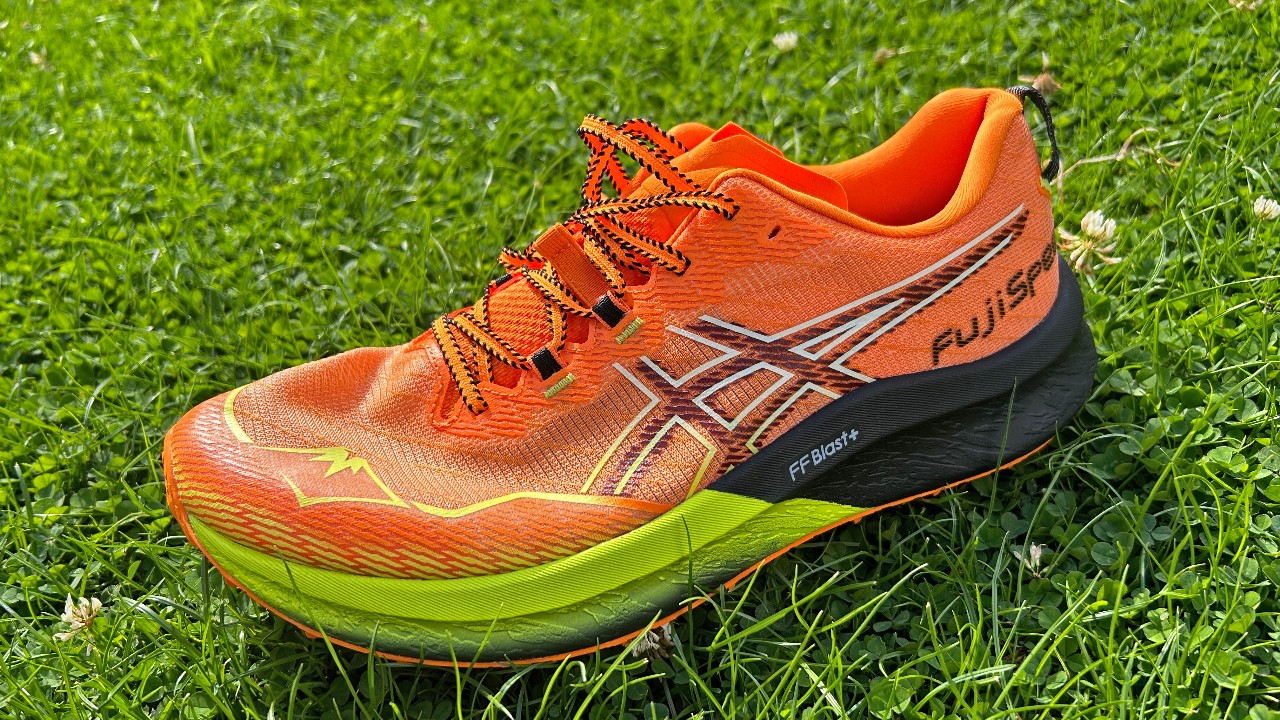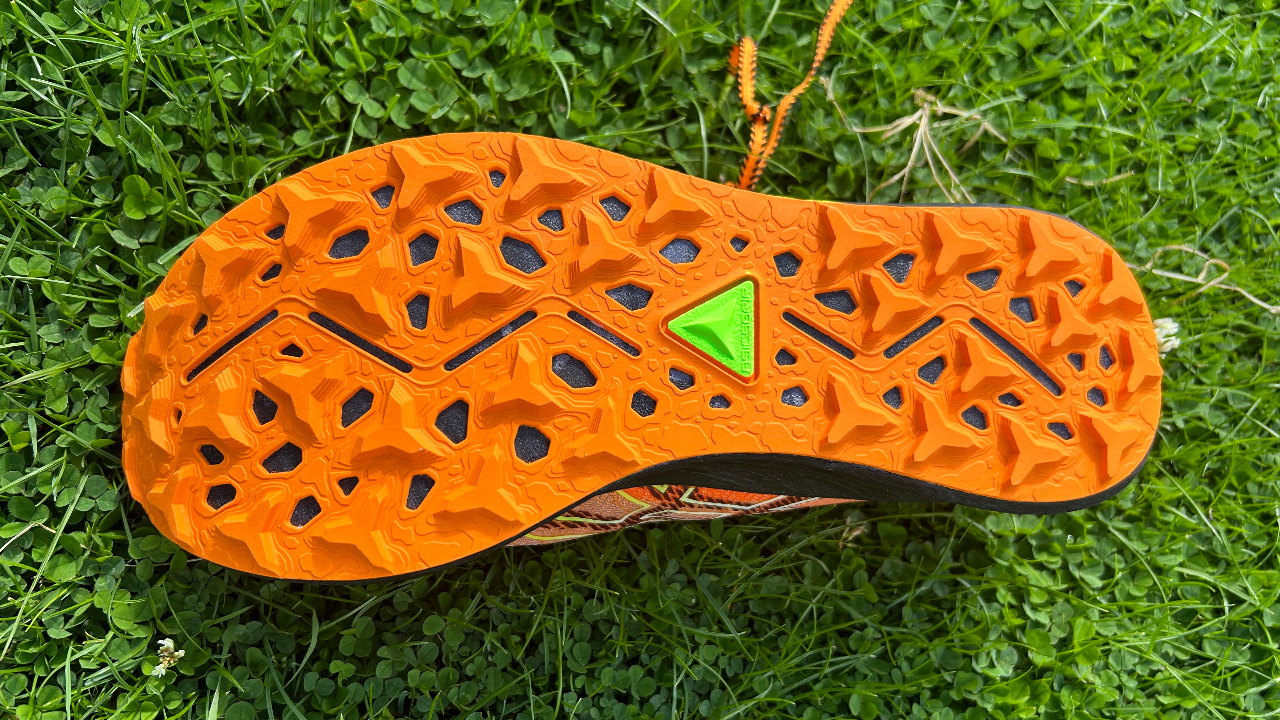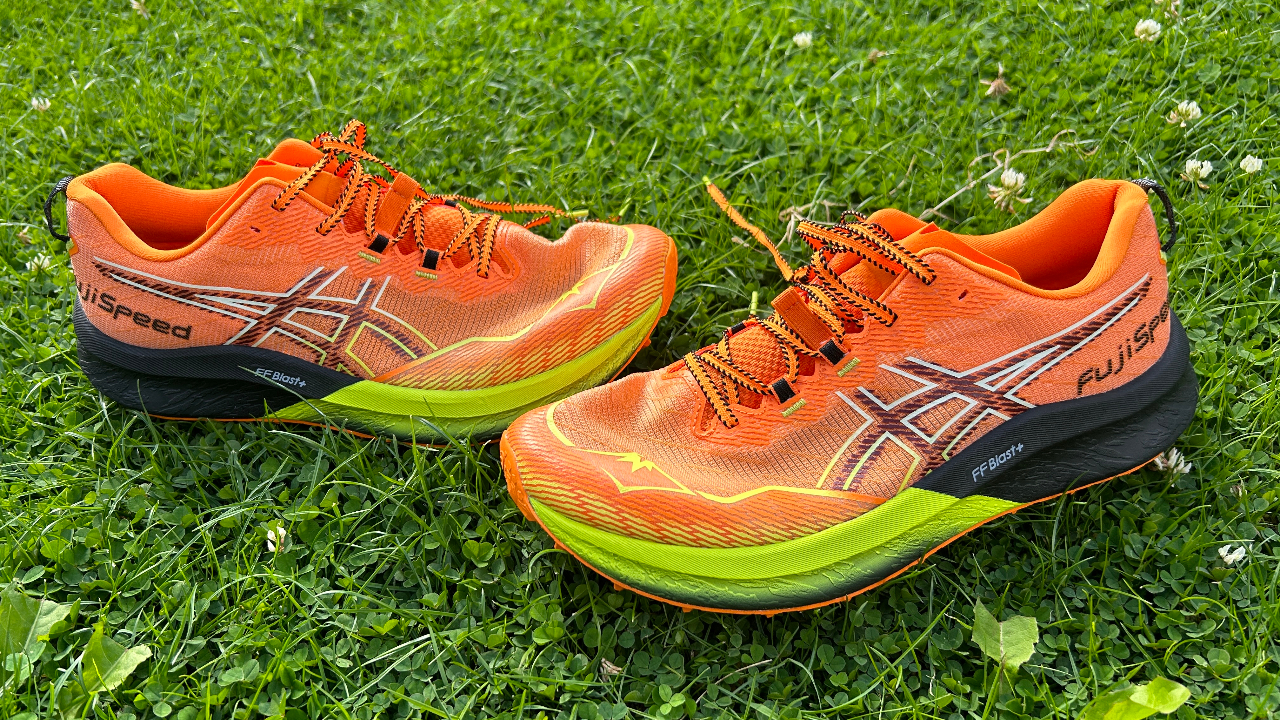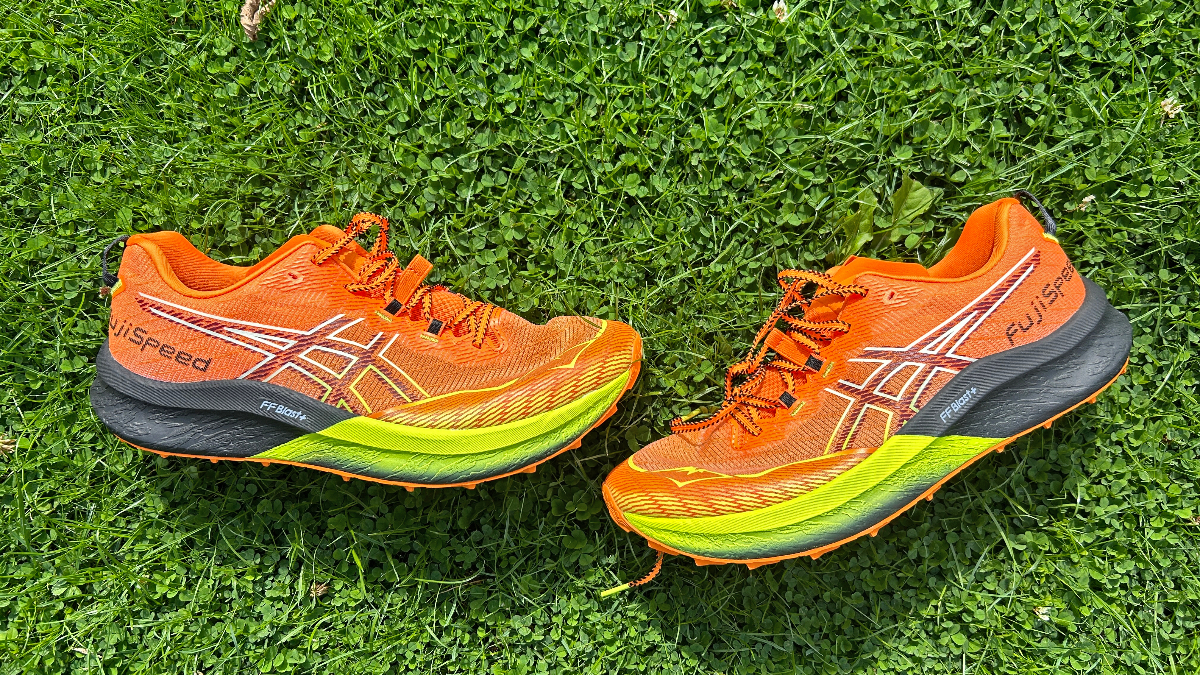Our Verdict
The Asics Fujispeed 2 is a terrific racing shoe for the trails, with a carbon plate and a design that’s light and nimble. It’s not as comfortable as more ultra-marathon-focused shoes like the Nike Ultrafly, but over shorter distances it’s the best trail racer I’ve tested. There’s also the bonus that it doesn’t cost as much as other off-road super-shoes.
For
- Light, agile design
- Carbon plate
- Versatile grip
Against
- Firmer ride than others
- Less stable than others
You can trust Coach
The trail-racing shoe scene has never been healthier, with major launches like the Nike Ultrafly and Adidas Terrex Agravic Speed Ultra joining the fray in recent months to compete with the likes of the Hoka Tecton X2 and Saucony Endorphin Edge.
All these shoes use cutting-edge tech from the best carbon plate running shoes for the roads, and come with eye-wateringly high prices. However, one trail-racing shoe that bucks this trend is the Asics Fujispeed 2, which is cheaper than its rivals, and yet still delivers a rapid ride aided by its carbon plate. It’s one of the best trail-running shoes available for shorter race distances, although I’d choose a comfier option for ultra-marathons.
Asics Fujispeed 2 Review: Price And Availability
The Asics Fujispeed 2 launched in Europe in August 2023 and costs $160 in the US and £160 in the UK. That price is not exactly cheap, but given that most trail super-shoes with tech like carbon plates cost £200 or more, the Fuji Speed 2 is a bit of a steal.
How I Tested This Shoe

I’ve run just over 30 miles (around 50km) in the Asics Fujispeed 2, most of that on dry forest paths, with some road sections and occasional forays on to muddy single-track trails. I’ve done runs at a mix of paces, with one hard 10-miler and a long hills session, plus a couple of easier runs. I didn’t test the original Fujispeed, but I have tested several other trail super-shoes, including the Nike Ultrafly, Hoka Tecton X2 and Adidas Terrex Agravic Speed Ultra.
Design And Fit
The Asics Fujispeed 2 has much in common with the Asics Magic Speed 3 road shoe, which I’m a big fan of. It has a full-length carbon plate running through the rockered midsole, which is made from FF Blast+ foam. This is not Asics’ best foam, which is the bouncy FF Turbo material found on the Superblast and Metaspeed Sky+ shoes, but it’s still a light and springy foam that’s firm enough to be quite stable when off-road.
Asics hasn’t confirmed the stack height, but to my eye it’s pretty high at the heel, probably above 35mm. The heel-to-toe drop of 5mm has been confirmed. There are small sidewalls of foam your foot sits within to add stability, but it’s not as deep a “bucket seat” design as on other shoes like the Adidas Terrex Agravic Speed Ultra.
The woven upper has a reinforced section running around the front of the toe box and the collar of the shoe is well padded to add comfort and hold the back of your foot securely on the run. The shoe has a gusseted tongue and a lace garage, along with a pull tab at the back of the shoe.
Sign up for workout ideas, training advice, reviews of the latest gear and more.

Asics uses its own Asicsgrip material for the outsole of the shoe, rather than outsourcing it to a brand such as Vibram. The three-pronged lugs have bite on soft ground, but are not that deep and the Fujispeed 2 is best suited to dry, hard trails.
At 9oz/257g in my UK size 9, the Fujispeed 2 is light for a trail shoe, especially considering that it has a high midsole stack. It’s the lightest trail super-shoe I’ve tested, and has a narrow design that makes it feel agile. The downside of this shape is that the fit may not work for everyone. I have a narrow fit and was fine with my normal size, but the Fujispeed 2 is less roomy in the toe box than most trail shoes. This design also reduces stability on tricky downhills, in contrast to the wide landing zones you have on shoes like the Nike Ultrafly and Adidas Terrex Agravic Speed Ultra.
Running Performance
Many of the trail super-shoes available are geared towards ultra-marathons, and that means they often don’t feel that fast when you first pull them on. This isn’t the case with the Fujispeed 2, and its tight fit also gives it a racier feel than other trail shoes.
The ride is great when moving at speed. The rocker is smooth and, while the midsole foam is not especially bouncy, there is propulsion off the toes from the plate once you’ve rolled through onto your forefoot.
I did a one-hour progression run on the trails, increasing my heart rate over the course of three 20-minute increments, and averaging just under six minutes a mile overall, and the Fujispeed 2 felt fantastic. It’s not explosively springy, but it is easy to keep your cadence high and turn your legs over because it is nimble and light.

That nimbleness was evident when I did a hill session in the shoe, running six three-minute reps. While other options like the Hoka Zinal 2 are lighter, the Fujispeed 2 manages to feel agile while having a higher stack for extra comfort and bounce. It doesn’t have as much comfort as others, though. The FF Blast+ midsole, combined with the carbon plate, creates a firmer feel than you get from the Nike Ultrafly, Hoka Tecton X2 and Adidas Terrex Agravic Speed Ultra when moving at slower speeds.
I’d fancy racing up to marathon distance in the Fujispeed 2, especially on well-maintained, flatter trails where your speed will be high throughout. For longer events, or runs with sections on harder, jagged ground and steep descents, I’d prefer the added comfort of the Ultrafly or Agravic Speed Ultra, and the Hoka and Nike running shoes are more stable when landing on uneven ground.
I’ve been running in dry conditions and so far have had no concerns about the grip of the Fujispeed 2. The lugs probably won’t bite deep enough for really muddy events, but they can handle the odd boggy patch and stick to rocks and roots well. The shoe is comfortable for long stretches on the road as well.
Is The Asics Fujispeed 2 Worth It?

The Fujispeed 2 is not just a more affordable alternative to the new breed of expensive trail super-shoe, I’d say it’s probably the best racing option for most people tackling shorter off-road events. It’s fast, it grips well on a variety of terrain, and it has enough cushioning to push hard for a few hours on undulating routes.
Over longer distances, or when on rockier trails with steeper climbs and descents, the added comfort of shoes like the Nike Ultrafly or Hoka Tecton X2 comes into play. I’d say those shoes have more stability than the narrow Fujispeed 2 when running downhill, where the Saucony Endorphin Edge also feels more reliable, thanks to its width.
The Adidas Terrex Agravic Speed Ultra is another strong option for any distance, as long as you get on with the aggressively rockered design. It’s bouncier than the Fujispeed 2 and has a wide forefoot to add stability, but the soft foam and narrow rear and midfoot of the shoe won’t work for every runner on technical trails.
All those are considerably more expensive than the Fujispeed 2, however. Unless you’re a long-distance mountain runner then the Asics shoe will probably serve you just as well as, if not better than, a speedy off-road option.

Nick Harris-Fry is a journalist who has been covering health and fitness since 2015. Nick is an avid runner, covering 70-110km a week, which gives him ample opportunity to test a wide range of running shoes and running gear. He is also the chief tester for fitness trackers and running watches, treadmills and exercise bikes, and workout headphones.

